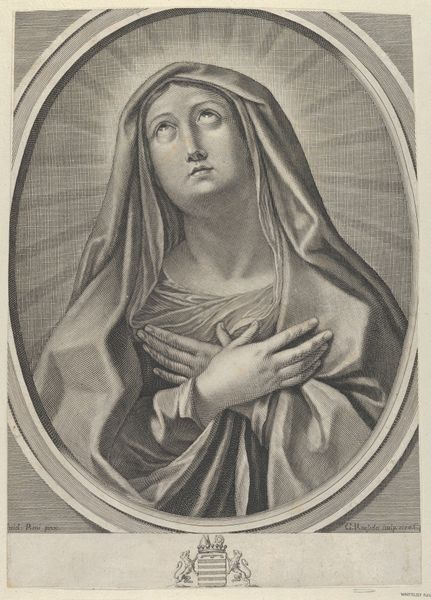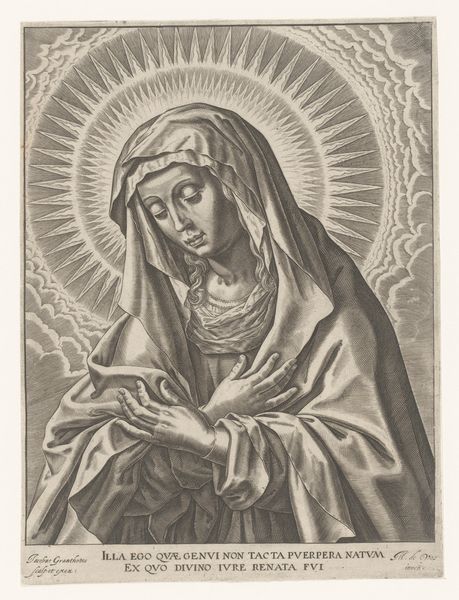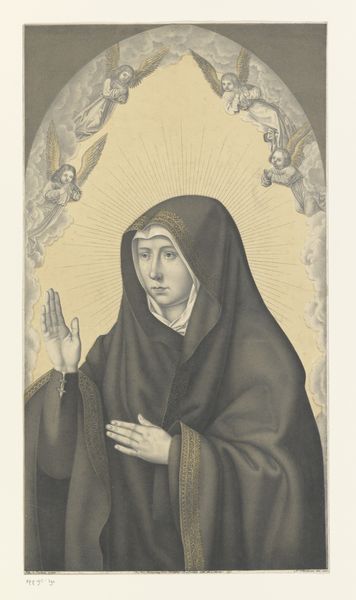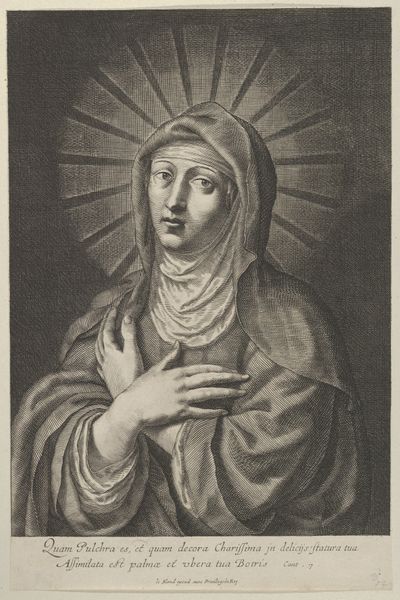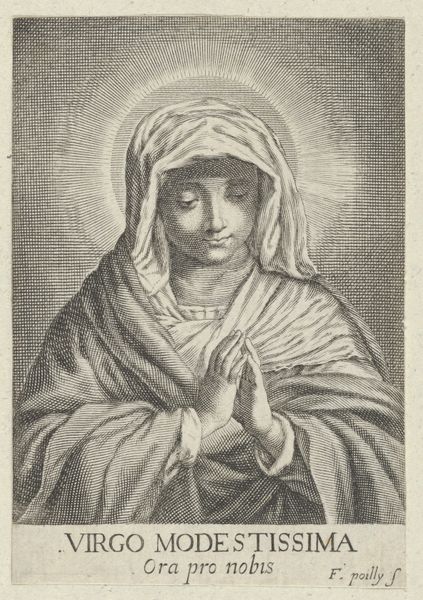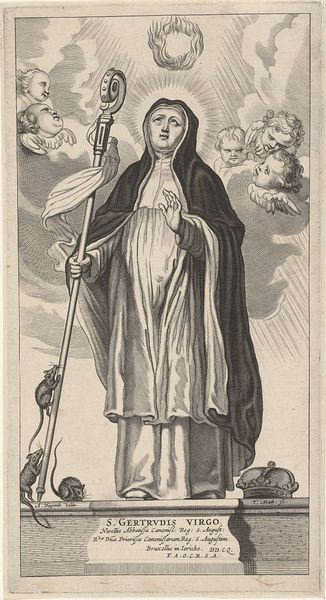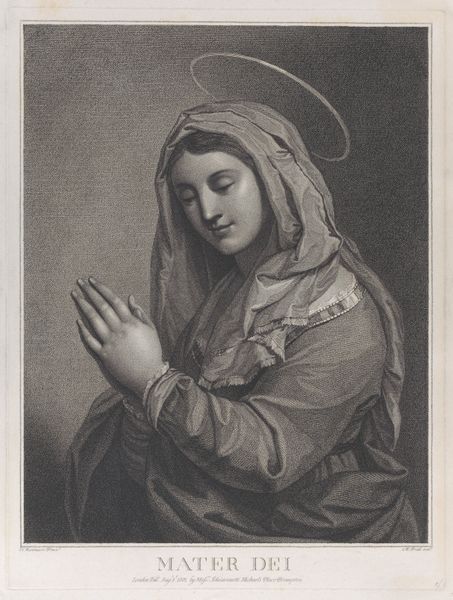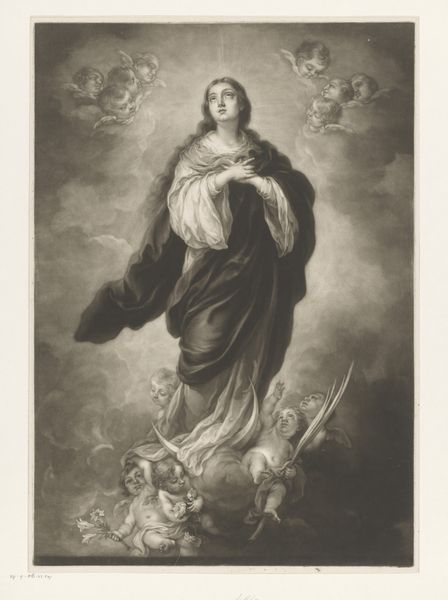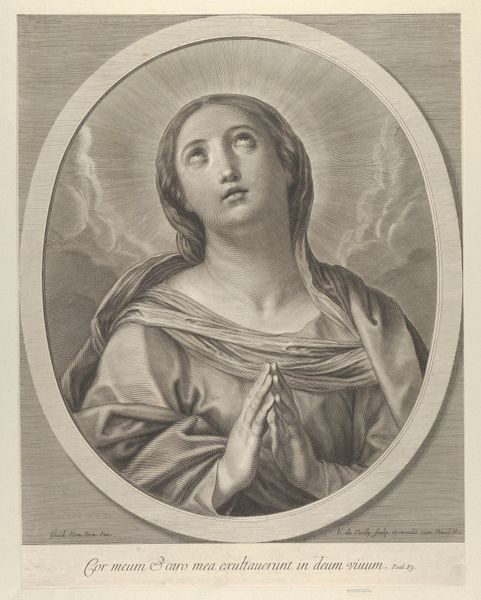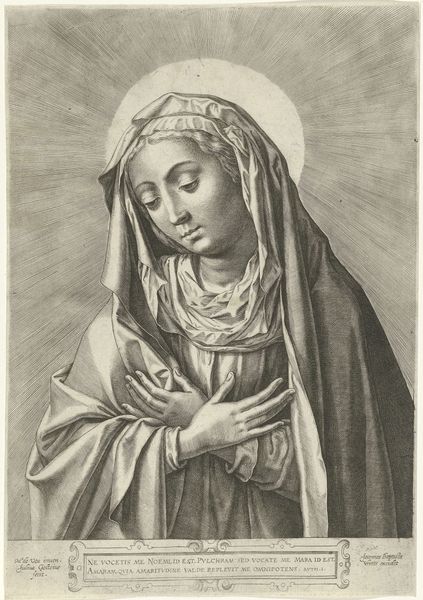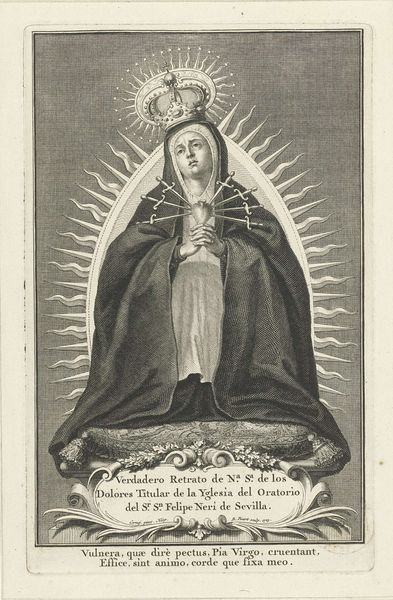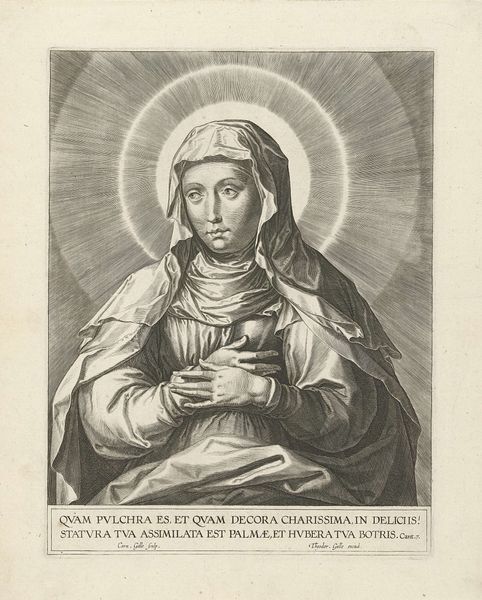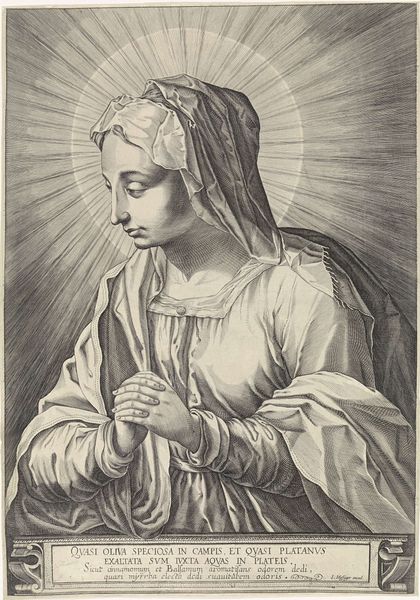
print, paper, ink, engraving
#
portrait
#
baroque
# print
#
old engraving style
#
caricature
#
paper
#
ink
#
pencil drawing
#
portrait drawing
#
engraving
Dimensions: height 289 mm, width 187 mm
Copyright: Rijks Museum: Open Domain
Editor: We're looking at "Heilige Drie-eenheid in Maria" - or "Holy Trinity in Mary" - a print by Jean Boulanger, created sometime between 1616 and 1680. It's currently held at the Rijksmuseum. The image itself, with Mary surrounded by clouds, gives it a soft, almost dreamlike quality. How do you interpret this work? Curator: What interests me most about this print is its visual representation of a complex theological concept within a specific socio-political context. The engraving uses the then-popular imagery of the baroque period to create a very potent devotional tool, and understanding how this imagery was disseminated is crucial. Consider the historical relationship between religious art, state power, and individual faith at the time it was created; the period saw great upheavals such as the Counter-Reformation. Can we really separate this work from such sociopolitical dynamics? Editor: That’s fascinating. So, beyond the surface-level depiction of the Holy Trinity and Mary, it also operates as a commentary of, or perhaps even propaganda related to the political role of Catholicism? Curator: Precisely! Remember, art in the Baroque period was frequently used to reinforce the authority of the Church and to stir religious sentiments amongst believers. The engraving’s composition and its accessibility as a print also contributed to how it conveyed messages. Now, where and how do you think such art pieces would have been encountered by people, then? Editor: That makes so much sense now. It highlights how deeply intertwined art, religion, and politics really are! Curator: Exactly, and examining these connections can radically transform our understanding of art history and the broader context that shaped it.
Comments
No comments
Be the first to comment and join the conversation on the ultimate creative platform.
